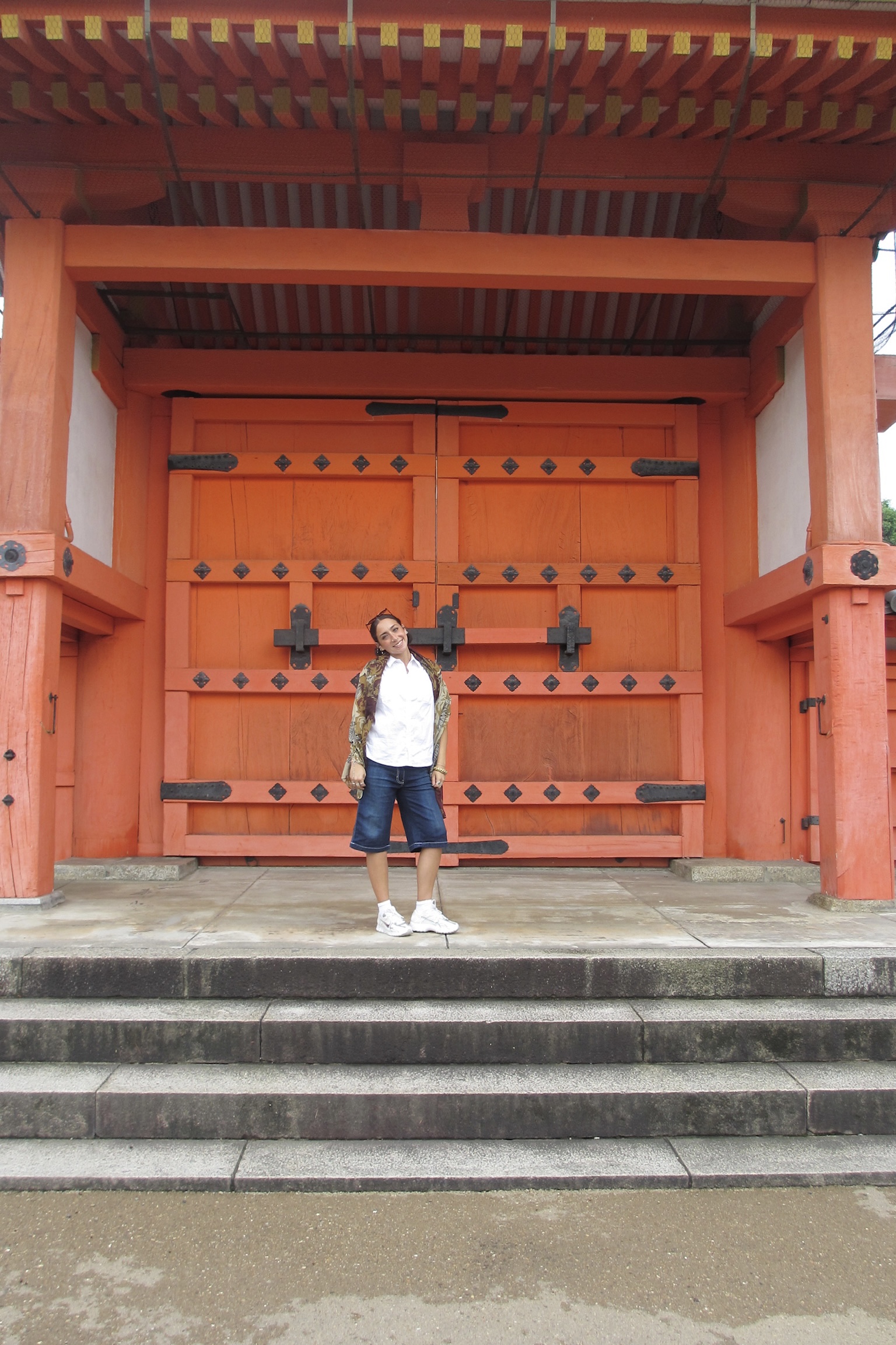
One Travel Course, Four Languages to Know Experiencing the Philippines through my multicultural background
October 30, 2020
Sarah Kaino ’20 participated in the interterm ’20 travel course, “SCC 329/DOC 329: Social Nonfiction Methodologies,” to the Philippines. In her blog post below, she writes about how her trip to the Philippines was meant to be just another course but turned out to be an exploration of her identities.
I will be the first to say there are distinct differences between each culture in Asia despite the many similarities. Some of the nuances are easier to articulate than others. Like most things—including college life—understanding and navigating racial, ethnic, and cultural identity are vastly complicated.
I was born in Asia but moved to the States from before I could remember. Ethnically I am Chinese, but I would identify as culturally Japanese, and specifically, Japanese-American. Like I said: complicated. I have often described it as crisscrossing instead of intersectionality because I have relied on or experienced my multiple ethnic and cultural identities separately, whether in the States or abroad. Prior to college I had the fortune of already being a somewhat regular international traveler, and studying abroad was the main thing I wanted to do in college. I almost did my bachelor’s degree in London; that’s how much I wanted to be in an international context. So, having been to a number of other countries in Asia, specifically, feeling at home in collectivistic cultures and (barely) getting by when it comes to several of the languages, there wasn’t much to consider when I heard about the 2020 Philippines Travel Course.  The official course is called Social Nonfiction Methodologies, which are the many technical words for a course where students produce one portrait documentary (a film from one person’s perspective); it’s a hybrid class between the School of Communication and Dodge College of Film and Media Arts. My excitement and decisiveness to apply and commit to the course had no intentional connection to broadening my understanding of my own ethnic background. Little did I know the Philippines would be where I would experience a clarity to the hybrid that is all of my cultural and ethnic identities and a deeper connection to them.
The official course is called Social Nonfiction Methodologies, which are the many technical words for a course where students produce one portrait documentary (a film from one person’s perspective); it’s a hybrid class between the School of Communication and Dodge College of Film and Media Arts. My excitement and decisiveness to apply and commit to the course had no intentional connection to broadening my understanding of my own ethnic background. Little did I know the Philippines would be where I would experience a clarity to the hybrid that is all of my cultural and ethnic identities and a deeper connection to them.
On the first day of filming, I found myself in a conversation that would foreshadow a lot of my future experiences in the Philippines. I had just come back from grabbing my backpack in my room and had just walked into the lobby when I heard one of the tour guides, Ate (Auntie) Lorna greet me with my name in Japanese. I blinked, then found the words to respond to her. We continued talking as though it made complete sense to be speaking in a language that was neither of our first languages until it was time to go to our separate teams. I was delighted and shocked to be using Japanese, and in the Philippines of all places; I barely speak Japanese in the States and even then it tended to confuse people as they assumed I spoke Chinese.
My excitement and decisiveness to apply and commit to the course had no intentional connection to broadening my understanding of my own ethnic background. Little did I know the Philippines would be where I would experience a clarity to the hybrid that is all of my cultural and ethnic identities and a deeper connection to them.
 Several days later I was at a lunch to interview the president of the Electric Vehicle Association of the Philippines, Edmund Araga, for our documentary. Halfway through the meeting, he found out I had a background in both Chinese and Japanese and proceeded to break off from the conversation in English to ask me a couple of questions in both languages. I found myself simultaneously trying to comprehend both the words themselves and the amazing scenario I was in: being in the Philippines speaking to a very important businessman in two languages I had not expected to use, and, of course, unsurprisingly tripping over my words in an attempt to keep up in the conversation.
Several days later I was at a lunch to interview the president of the Electric Vehicle Association of the Philippines, Edmund Araga, for our documentary. Halfway through the meeting, he found out I had a background in both Chinese and Japanese and proceeded to break off from the conversation in English to ask me a couple of questions in both languages. I found myself simultaneously trying to comprehend both the words themselves and the amazing scenario I was in: being in the Philippines speaking to a very important businessman in two languages I had not expected to use, and, of course, unsurprisingly tripping over my words in an attempt to keep up in the conversation.
I found myself simultaneously trying to comprehend both the words themselves and the amazing scenario I was in: being in the Philippines speaking to a very important businessman in two languages I had not expected to use…
Fast forward to the last four days of our trip, and one cozy airplane and sunburnt (for some) boat ride over, I was in the middle of the ocean while swimming with whale sharks and getting hit with strong waves. After an unfortunate number of times inhaling salt water, I heard someone behind me ask if I was okay, but in Japanese. He had no idea if I could understand him when he asked because he was from a completely different tour group. Between being surprised again with speaking in Japanese with someone on the trip, and in the middle of the Pacific Ocean of all places (who knew right?), I still managed to swim and have a short conversation with him. There was not a lot of room for small talk when we were both trying to stay above the waves.
Between being surprised again with speaking in Japanese with someone on the trip… I still managed to swim and have a short conversation with him.
Finally, at our last destination, I found a couple of hours to blend in with the other guests and enjoy the oceanside view. I found a seat at a cafe and was writing down notes and events of the day and had just given my order to the waiter in English, when I heard people walking by speaking in Chinese. I did not understand all of it, but enough to confuse my brain between the English I was writing and the Chinese I was hearing. When they started looking at the menu, I realized the same waiter I talked to was taking their order and replying with ease in Mandarin. Three minutes later he was helping a young Japanese couple decide on drinks, speaking effortlessly in Japanese, then immediately turned to talk to his coworker about the couple’s order in Tagalog.
Seeing all my identities and languages quite literally interacting with each other shifted what I had viewed as minimally relevant into a broadened gift of connection.

In my mind, I was still trying to catch up with the internal translation of all the languages when the waiter came to check to see if I needed anything and brought free salted roasted peanuts. I sat there trying to sort out the series of unexpected encounters in the last fifteen minutes while munching on the equally unexpected snack. It was then I realized that fifteen minutes was a culmination of what I had experienced over the last three weeks but couldn’t quite put a finger on. Seeing all my identities and languages quite literally interacting with each other shifted what I had viewed as minimally relevant into a broadened gift of connection.
 I haven’t known anything else my whole life other than being Chinese raised in an English-speaking Japanese-American household, with more Japanese language than most people think and drastically less Chinese than usually is assumed. It can be hard to believe I can claim personal significance to any of these identities if I am anything less than one-hundred percent comfortable in each culture and language. And I am not. I am not entirely at ease in any one of my three “home” cultures because my background is of nuanced identities where there are enough similarities to help understand larger cultural norms, such as time-orientation and familial responsibilities, but a lot of clear differences. For me, the Philippines was a place where so many Asian backgrounds were merging and interacting and thriving because of it. All the small, entirely surprising, and seemingly unconnected moments actually became one of the most valuable parts of my trip I brought back with me: leaning into my personal multicultural identities not for the sake of similarity, but for the sake of understanding and connection.
I haven’t known anything else my whole life other than being Chinese raised in an English-speaking Japanese-American household, with more Japanese language than most people think and drastically less Chinese than usually is assumed. It can be hard to believe I can claim personal significance to any of these identities if I am anything less than one-hundred percent comfortable in each culture and language. And I am not. I am not entirely at ease in any one of my three “home” cultures because my background is of nuanced identities where there are enough similarities to help understand larger cultural norms, such as time-orientation and familial responsibilities, but a lot of clear differences. For me, the Philippines was a place where so many Asian backgrounds were merging and interacting and thriving because of it. All the small, entirely surprising, and seemingly unconnected moments actually became one of the most valuable parts of my trip I brought back with me: leaning into my personal multicultural identities not for the sake of similarity, but for the sake of understanding and connection.
…the Philippines was a place where so many Asian backgrounds were merging and interacting and thriving because of it.
Watch our documentary here: https://vimeo.com/388175969
The Jeepney, or Jeep as affectionately called in the Philippines, is the most popular mode of transportation for thousands of daily commuters. This documentary explores the Jeep’s importance in Filipino culture through the eyes of local drivers, passengers, and business professionals who rely on the Jeep in more ways than one.
Sarah participated in the interterm 2020 Travel Course titled, “Social Nonfiction Methodologies.” Learn more about Travel Courses on our website. Interterm and spring break Travel Course applications are due in the fall; summer Travel Course applications are due in the spring.

